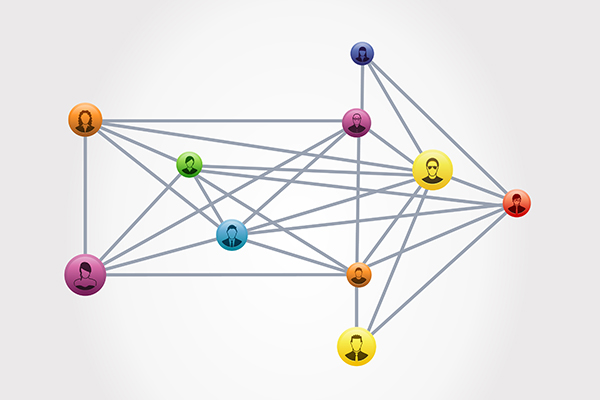The way employees do business has changed over the last few years. More and more meetings are conducted remotely, using UC tools including video conferencing. Although convenient, there are a few things to keep in mind if physical workspaces are phased out.
Virtual reality, in its modern iteration, possesses the potential to revolutionise the way in which companies conduct business. The days of crowding around a landline phone in the centre of a conference table in order to collaborate and communicate with valuable business partners are gone. In their place is a world of opportunities fuelled by the development of new and exciting communication technologies. By using simulation and visualisation to create computer generated worlds that interface with most of the human senses in 3D, virtual reality has garnered the interest of numerous verticals. What these industries see is the potential to communicate whilst untethered by physical boundaries.
The technology is clearly in its infancy, but already companies are equipped with tools to support virtualised meeting spaces. Bruce Withington, Executive Director, FVC, describes some of the hardware already in place enhancing unified communications. “One of the most noticeable tech advancements in modern boardrooms is screen technology,” says Withington. “The bulky monitors and fuzzy images of just a few years ago have been replaced with high definition, razor-thin units that incorporate touch screen technology for fluidity of use and presentation. Interactive whiteboards have also helped push collaboration to the next level.”
New technology is certainly not limited to the way we view each other but extends to the way in which we interact. “Microsoft recently launched the Surface Hub for medium sized meeting rooms. The device is essentially a giant touch tablet with two forward facing cameras and is preloaded with Lync, Microsoft’s business version of Skype,” explains Withington. He is, however, cautious, adding, “It is too early to say if this will prove to be a success, but it is clearly aimed at giving added video to distance collaboration.”
Discussing the latest UC technologies can be exciting, but more important than the smartest new piece of kit on the market, is the impact that a streamlined virtualised service will have on an enterprise. Many believe that as the technology grows, variables like time and distance will continue to shrink until virtually they are non-issues. This carries the potential for true global collaboration and with it, seemingly endless possibilities for new ventures and developments.
The impact of new UC technology is already being felt by companies who employ video conferencing. Distances between clients and partners are already shrinking, but there are still plenty of areas to improve. “What a lot of industries are hoping for,” explains Withington, “is that video and real-time collaboration will become the norm. We have already seen the removal of distance as a barrier to working collaboratively, but time differences and language barriers can still pose an obstacle to the fluidity of collaboration. High-quality audio and video are vital to helping leverage these issues.”
When it comes to UC technologies, ease of use and consistency are key factors in the success or failure of a new device. The goal of UC technology is to enable collaboration and teamwork, and the technology itself needs to be streamlined and invisible. By its nature, UC technologies are used by a wide variety of end-users – a fact which certainly poses a challenge to developers who aim to make their technology as universally intuitive as possible.
Withington agrees, “Technology companies are comprehending the message that clients are no longer willing to invest large amounts of time learning how to use new tools, especially with the speed with which these tools are often updated and replaced. The most intuitive UC technologies are the most successful.”
Creating an intuitive and recognisable experience is the key to seamless enterprise UC. However, as of now, end-users are often guilty of working around corporate policy and using their service or device of choice to achieve a more familiar user experience. This can result in a clutter of devices, and increased risk of the dissemination of sensitive data. “It is just human nature,” says Geoff Brooks, VP Sales, Seecrypt. “People will use the services and devices that they are happy with. They are easy to use, so they are comfortable starting a group chat and discussing corporate information that should be kept secure.” The solution, he says, is to create a UC environment that delivers a familiar user experience whilst providing enterprise level security.
If regulations set in place are too rigid, the fear is that employees will try and work around the roadblocks. A collaborative process is often the answer. “The best practice to address these security challenges of collaboration is through company policies, guidelines, and training for users as well as security measures in the collaboration technology and its network,” says Wael Abdulal, Senior Manager – Collaboration, Cisco UAE.
“No technology can be bad-behaviour proof,” says Andrew Harnett, VP Product and BD, Seecrypt, on the security of UC. “A user can always send a message or make a phone call through the native application, forgoing the business approved secure applications. The corporate world, therefore, needs to mandate policies that hold employees accountable when corporate IP is compromised.” Businesses need to provide employees with secure alternatives, he says.
When solutions are in place, security still needs to be a top concern. “The best strategy for reducing and mitigating the threats that can come from online collaboration and sharing is to follow defence-in-depth security practices. These practices control access to sensitive systems and websites, then define what users can see and do when they are granted access,” says Abdulal.
Cutting-edge UC technology and virtualised spaces are certainly exciting prospects for both enterprise and commercial use. However, it is important to remember that much of this technology is still in its early stages and companies should move forward with measured enthusiasm. “We have five senses,” Withington says, “and right now virtual technology can only appeal to two of them. The technology we have today is certainly impressive, but in terms of fully immersive virtualised spaces, we still have a long way to go.”





